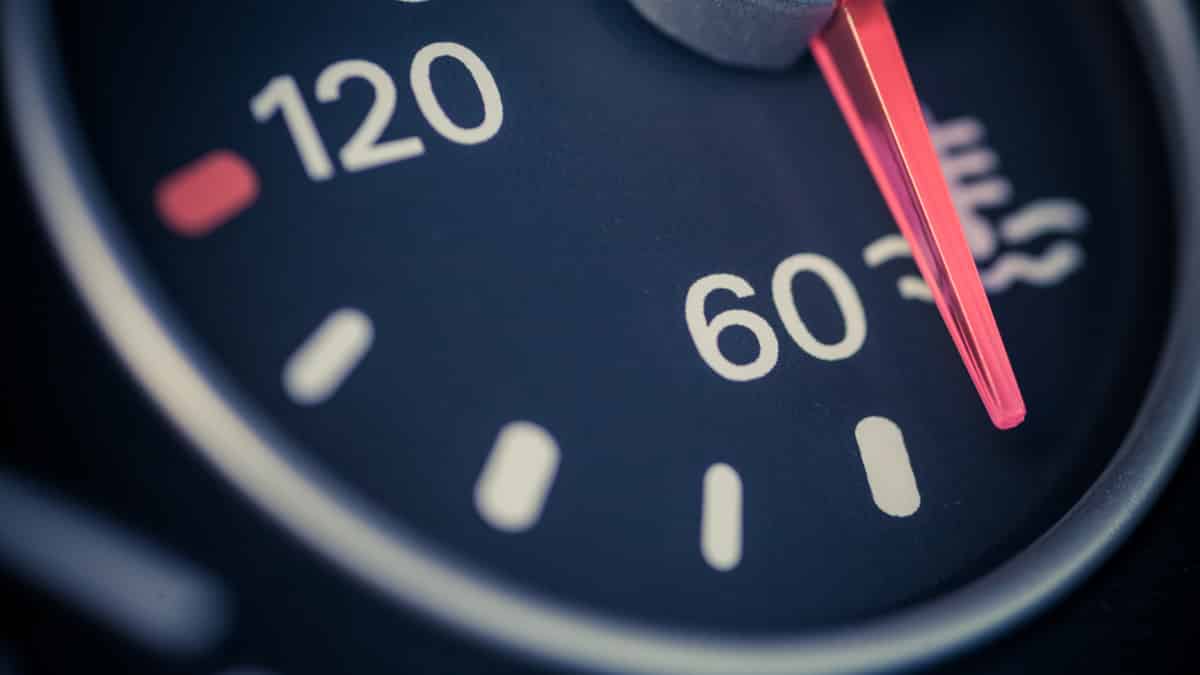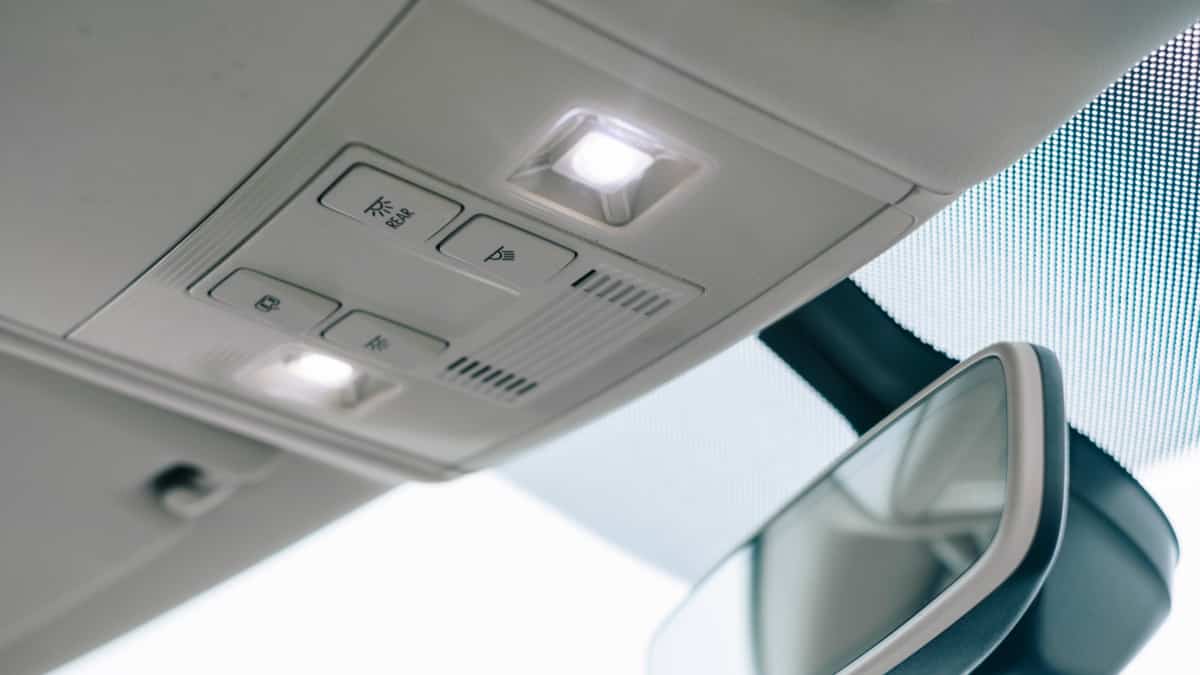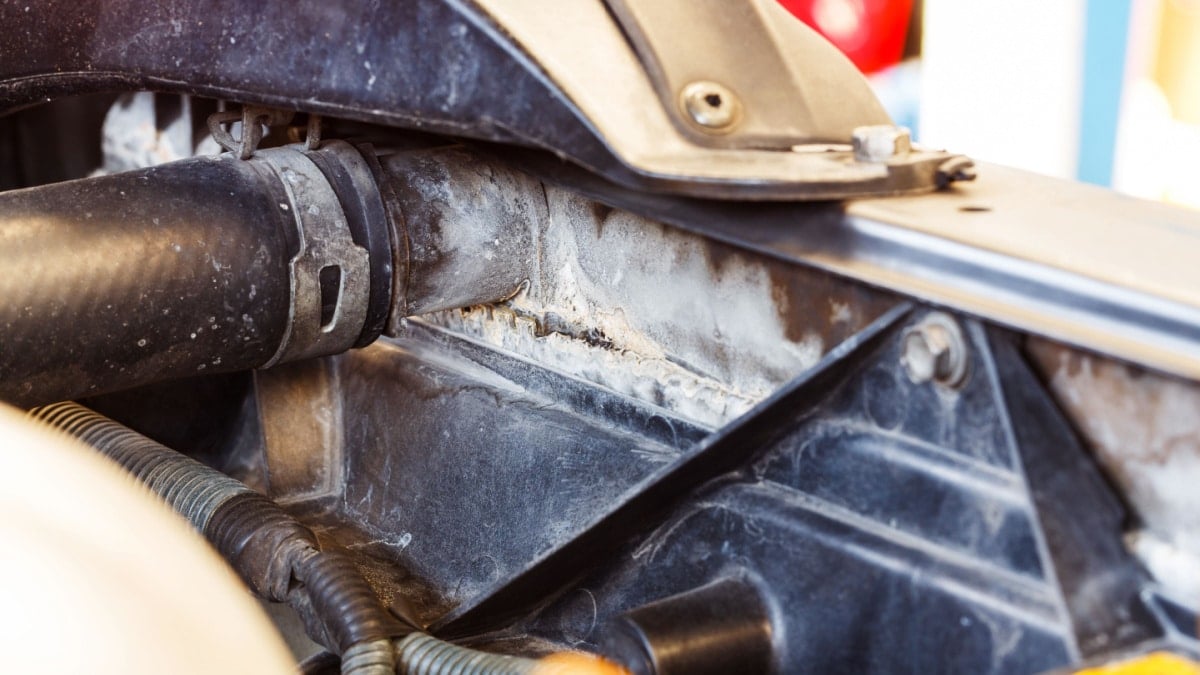If you have a problem with your coolant temperature and realize that the lower radiator hose is cold instead of hot, you could be experiencing problems with the coolant system that need to be fixed.
You will need to look at the various parts that influence the radiator temperature to properly diagnose a lower radiator hose cold problem.
6 Causes of a Cold Lower Radiator Hose
The most common reasons why your lower radiator hose is cold are a faulty thermostat, a bad water pump, or a low coolant level. It can also be caused by airlocks or a clogged coolant system.
Here is a more detailed list of the six most common causes of a cold lower radiator hose:
1. Faulty thermostat

This is the most common problem when it comes to a cold lower coolant hose. Engines have a valve-based thermostat that determines and regulates coolant inflow so that the engine operates at an optimal temperature and does not overheat.
If your car is overheating and at the same time won’t heat the lower coolant hose, you most likely have a problem with your thermostat, which needs to get replaced.
The thermostat should be closed when the engine is cold and not running. Regulation of water by the thermostat prevents engine hot spots. Once the optimal temperature has been reached, the coolant water will be let into the radiator for energy dissipation.
If the thermostat is not opening at this time, it may cause the lower radiator hose to stay cold, and at the same time, overheat the engine.
RELATED: 7 Causes Why Car Temperature Gauge Stays on Cold
2. Faulty Water Pump

The water pump‘s job is to pump coolant from the engine block towards the radiator to chill the coolant.
If the water pump is not functioning properly, the water will stand still in the engine, and no water will get pumped to the radiator.
The lower coolant hose is most likely the coolant output side of your engine, which means that the hose will stay cold.
3. Low Coolant Level

A low coolant level can create a lot of problems in the coolant system. A low coolant level may create air pockets in the coolant system and may be causing the water pump to stay in an air pocket.
The coolant level is super easy to check, so open your hood and read your car manual to find the coolant reservoir. Remember never to open it when the engine is hot, though, as it is boiling and will splash everywhere if you open it.
RELATED: No Heat in the Cabin – Common Reasons & Fixes
4. Air in the Coolant system

Air pockets in the coolant system are something you really do not want to have there. Air pockets can cause overheating and may stop the circulation from working properly.
It may also create an air pocket around the water pump, making it so that it can’t pump water anywhere.
Air in the coolant system can result from a faulty head gasket, or a poorly done coolant fluid change. If you know that you recently changed the coolant, you need to bleed the system properly.
Air in the coolant can also have been caused by a too low coolant level.
5. Clogged Coolant System

In some rare cases, the coolant system can get clogged. This is not very common, though, because the main coolant pipes are pretty big. However, if someone ran your car without coolant and just water, it could have created a lot of rust inside the engine.
This, together with a leaking head gasket, can create a lot of mess inside the coolant system. Try to flush the coolant system if you have tried everything else.
6. No problem at all

In many cases, when it comes to a cold lower radiator hose, there is actually no problem at all! The engine needs to be really hot and almost overheat before the thermostat lets the coolant pass by.
If your car is not overheating, but the lower coolant hose is cold when you feel it, it may just mean that it is not hot enough, and therefore there is nothing wrong with your engine.
Should both radiator hoses be hot?
Both upper and lower radiator hoses should be hot when the engine runs at operating temperature. This means the coolant flow through the radiator is sufficient, preventing the engine from overheating. The only situations when radiator hoses should be cold are while the engine is warming up or, in some cases, when cruising when it’s cold outside. This is because the thermostat will be closed before reaching a certain temperature, preventing coolant flow.
Why is my car radiator hot at the top and cold at the bottom?
This is because the hot coolant coming from the engine will enter the radiator at its top side. And while making its way down, the coolant will get cooled down by an air stream flowing through the radiator’s core. As a result, a good radiator will always be cooler at its bottom than at its top end.
Should upper and lower radiator hoses be at the same temperature?
If the car’s cooling system is functioning correctly, the lower radiator hose should be colder than the top one. When the coolant enters the radiator at its top end and passes through its core, its temperature will go down. But because both radiator hoses are still very hot, you’ll hardly be able to notice the difference just by hand. Instead, you’ll need an infrared thermometer or a similar device.
Is the lower radiator hose supposed to be soft?
Once the engine reaches its running temperature, the lower radiator hose, like the upper one, should feel firm when you squeeze it. The cooling system operates at a certain pressure, which is, for most cars, 10 PSI or more. This increases the coolant’s boiling point and makes the engine’s operation more efficient.
Why is my radiator half hot and half cold?
A radiator will be half hot and half cold when it’s clogged up with dirt buildups. When this happens, the coolant will only flow through a portion of its core, reducing the cooling effect. While a car with such a radiator may run fine under moderate loads, it will quickly overheat once it needs to put in more effort. This usually happens when driving uphill for longer or when towing a trailer.
The car’s cooling system controls the engine’s temperature and prevents it from overheating. Its components include the coolant pump, thermostat, and radiator, among other things. Additionally, there are several pipes and rubber hoses connecting all these together. The cooling system has several common failure points, with a clogged radiator being one of them.
This usually happens in high-mileage cars or those that have been neglected. The coolant flow through such radiators will not be sufficient, which leads to overheating, especially under heavy loads. If it is clogged up with dirt buildups, the radiator will be half hot and half cold.
Sources
Categories: Coolant, Troubleshooting
















